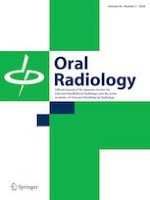Published in:

18-12-2023 | Brachytherapy | Original Article
Radiation doses of medical radiation workers performing low-dose-rate brachytherapy with 198Au grains and 192Ir pins for patients with oral cancers
Authors:
Masaru Konishi, Kiichi Shimabukuro, Junichi Hirokawa, Takashi Sadatoki, Tsuyoshi Katsuta, Nobuki Imano, Ikuno Nishibuchi, Yuji Murakami, Naoya Kakimoto
Published in:
Oral Radiology
|
Issue 2/2024
Login to get access
Abstract
Objectives
Low-dose-rate brachytherapy (LDR-BT) with 198Au grains and 192Ir pins is an essential treatment option for oral cancer due to its high rate of local control and low invasiveness. However, the radiation exposure of medical radiation workers is concerning. Thus, we aimed to determine the radiation dose delivered to medical radiation workers during LDR-BT using 198Au grains and 192Ir pins for oral cancer.
Methods
Thirty-two patients with oral cancer underwent 198Au grain interstitial LDR-BT between June 2016 and May 2023, and 23 patients with tongue cancer underwent 192Ir pin interstitial LDR-BT between March 2015 and November 2017 at our hospital. Dosimetry was performed by attaching a dosimeter to the chest pocket of the operator and assistant during 198Au grain or 192Ir pin LDR-BT. Since the operator also loads 198Au grains into the implantation device, the operator’s radiation dose includes the dose received during this preparation.
Results
Mean radiation doses of the operators with 198Au grain and 192Ir pin LDR-BT were 165.8 and 211.2 μSv, respectively. Statistically significant differences between the radioactive sources of 198Au grain and 192Ir pin LDR-BT were observed (p = 0.0459). The mean radiation doses of the assistants with 198Au grain and 192Ir pin LDR-BT were 92.0 and 162.0 μSv, respectively. Statistically significant differences were observed between the radioactive sources of 198Au grains and 192Ir pin LDR-BT (p = 0.0003).
Conclusions
Regarding radioactive source differences, 192Ir pin LDR-BT resulted in higher doses delivered to medical radiation workers than 198Au grain LDR-BT.





